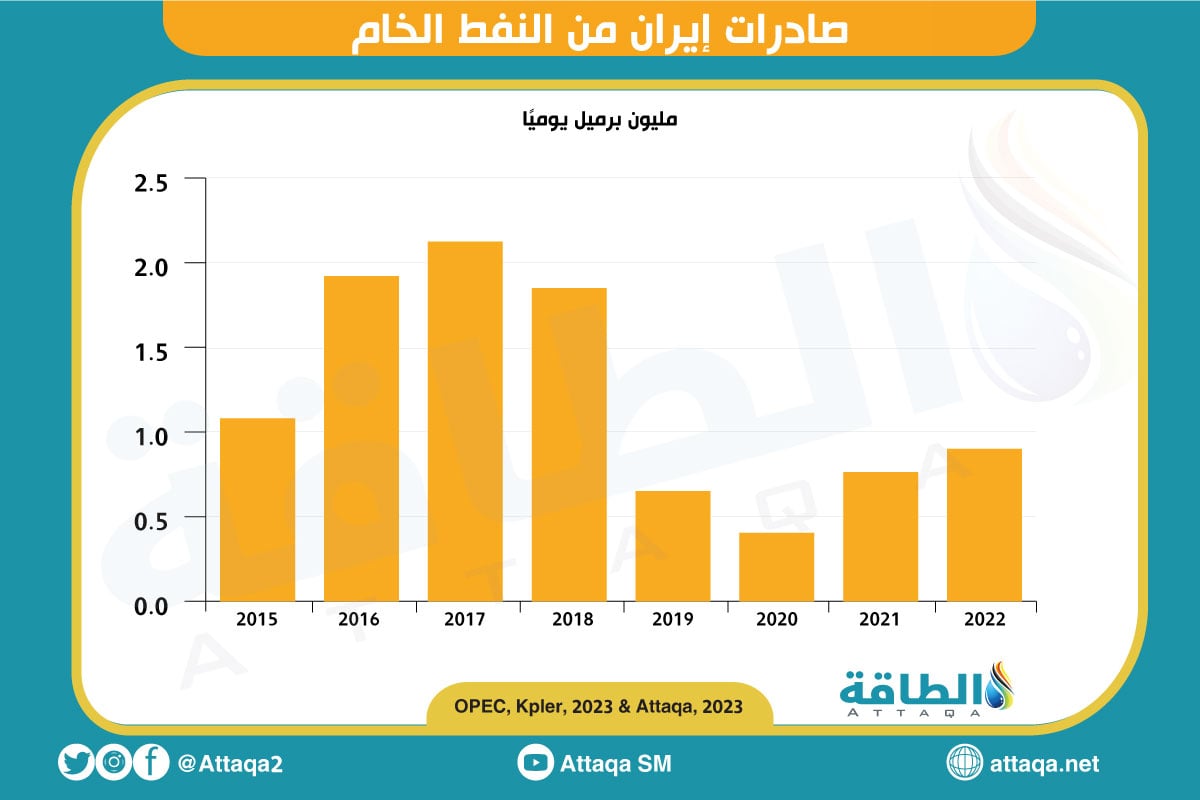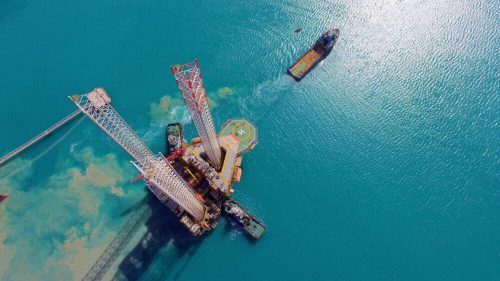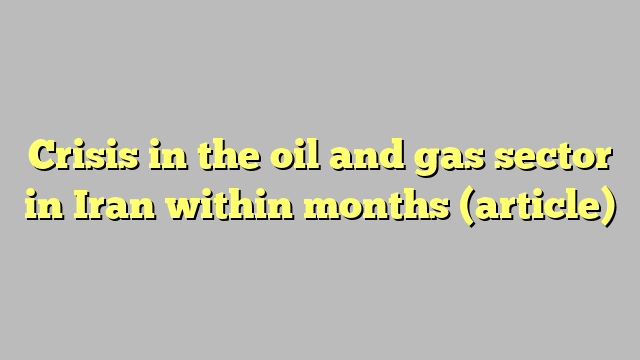Read in this article
- • Iran has traditionally relied on oil and gas to meet most of its energy needs
- • There is an increasing demand for renewable energy sources, such as solar energy and wind energy
- • Iran’s over-reliance on oil and gas exports is a major concern
- • The government needs to develop policies and incentives that encourage private sector investment in renewable energy
- • Iran relies heavily on natural gas for electricity generation, industrial production and domestic use
The new year has begun in Iran after its people faced massive inflation last year (2022), despite the state’s possession of oil and gas, in light of the negligent government in all economic fields.
On the energy front, despite having the second largest natural gas reserves in the world, the Iranians have had a difficult winter.
The administration of Iranian President Ebrahim Raisi has repeatedly claimed that, through active energy diplomacy, it has managed to increase oil production capacity and the amount of oil exports, despite sanctions, to the level of the JCPOA duration, and in a certain duration to the pre-plan level.
Of course, verifying such a claim is not a difficult task; Because despite the alleged increase in Iranian oil sales, the living conditions of the Iranian people have not improved.
Given that the export of oil is the main source of Iran’s foreign exchange income, in the Iranian year 1402, which extends between (March 2023 – March 2024), the Iranian energy industry will face many challenges.
challenges facing Iran
Iran was one of the world’s largest producers of oil and gas, and traditional energy exports were a major source of the country’s revenue.
However, Iran has faced many challenges in recent years, including sanctions imposed by the United States and other countries, as well as domestic challenges, such as aging infrastructure and growing energy demand.
The following graph, prepared by the Energy Research Unit, shows the volume of Iran’s exports of crude oil during the period between 2015 and 2022:

One of the main challenges for the energy sector that Iran faces is the need to modernize its oil and gas production infrastructure in the country, which is outdated and in need of repair or replacement.
This has led to a decrease in production and exports, as well as an increase in maintenance and repair costs.
Another challenge facing Iran lies in the need to diversify its energy mix. The country has traditionally relied on oil and gas to meet most of its energy needs, despite growing demand for renewable energy sources, such as solar and wind power.
In the Iranian New Year, Iran is expected to continue to face many energy challenges that require urgent attention from the government and decision-makers. Although the energy sector in Iran has been a major contributor to economic growth and development, it is subject to various internal and external factors.
Excessive reliance on oil and gas exports

Iran’s over-reliance on oil and gas exports is a major concern. Iran has vast reserves of oil and gas, but there is a need to diversify and develop other energy sources, including renewable energy, such as solar and wind power.
The government needs to develop policies and incentives that encourage private sector investment in renewable energy.
On the other hand, energy subsidies still represent a huge burden on the Iranian economy, and the subsidies have led to high energy consumption, inefficient use of resources, and waste.
Therefore, the Iranian government needs to implement reforms that gradually reduce subsidies, redirect savings towards investment in renewable energy and energy efficiency, and subsidize the electricity sector, which is in crisis due to insufficient investment in aging infrastructure and utilities.
Power outages are common and have become regular, especially during times of peak demand, and the government needs to prioritize urgent upgrading of the transmission and distribution network to ensure reliability, safety and affordability.
The burden of sanctions and geopolitical tensions
Sanctions and geopolitical tensions continue to weigh on the energy sector. Iran’s oil exports have been significantly curtailed by international sanctions, limiting the government’s ability to generate revenue.
On the other hand, tensions in the region have led to instability, which could disrupt energy supply chains, and the Iranian government needs to adopt a proactive approach to managing these challenges, including exploring new markets and partnerships.
It is worth noting that much of Iran’s energy production infrastructure was built several decades ago and needs to be repaired or replaced. This has led to a decline in production capacity, which in turn affected the country’s ability to export oil and gas.
Another issue that arises is the growing demand for energy within Iran itself. As a result of the country’s population continuing to grow, the country’s energy needs are increasing, and this has put pressure on the country’s energy production and distribution systems, which are struggling to keep up with demand.
In recent years, there has been a push to develop renewable energy sources in Iran, in part because of the need to diversify the country’s energy mix, and because of concerns about air pollution and climate change.
Shortage of natural gas
Iran relies heavily on natural gas for electricity generation, industrial production, and domestic use, and given the low pressure in the South Pars field, the country faces natural gas shortages, especially during the winter months, when demand is high.
This shortage led to the rationing of natural gas in homes, businesses and industries, causing disruptions to the economy and people’s daily lives.
To meet these challenges, Iran is implementing various measures, including investing in new gas fields, improving efficiency in electricity generation, promoting renewable energy sources, and modernizing the electricity infrastructure.
However, these efforts face various obstacles, such as economic sanctions, geopolitical tensions, and domestic political instability.
The decrease in gas pressure is due to a natural drawdown in the field over time, and Iran has not been able to pump enough gas into the field to maintain pressure.
This has led to a decrease in gas production from the field, which has affected Iran’s ability to generate revenue from its gas exports.
Moreover, gas exports have been an important source of revenue for the country, and reduced production from the South Pars field has severely affected the country’s economy, and Iranian gas exports to Turkey and Iraq have declined in recent years.

This decline in exports is attributed to several factors, including low pressure in the South Pars field, pipeline maintenance issues, and political tensions with neighboring countries.
To meet energy challenges, Iran is investing in alternative energy sources, such as wind and solar energy, and the country is looking forward to developing its petrochemical industry and increasing its refining capacity.
These measures aim to reduce the country’s dependence on oil and gas exports, diversify its energy mix, and ensure long-term energy security.
And if the new year is not accompanied by the implementation of a foreign policy of de-escalation, interaction with East and West, and active energy diplomacy, the Iranian energy industry will have a difficult and challenging year.
Sanctions imposed by the United States and other countries on the country have hampered Iran’s oil and gas production.
These sanctions have limited Iran’s access to the technology and financing required to develop its energy sector. As a result, Iran struggles to maintain its energy production levels.
The low pressure in the South Pars field added to Iran’s challenges, and the field’s gas production has been decreasing over the years, and the low pressure has exacerbated this problem.
* Dr. Omod Shoukry, senior advisor on foreign policy and energy geopolitics, is the author of “US Energy Diplomacy in the Caspian Basin: Changing Trends Since 2001.”
*This article represents the opinion of the author, and does not necessarily reflect the opinion of the energy platform.
related topics..
Also read..

Leave a Reply